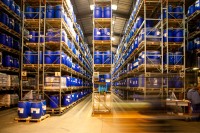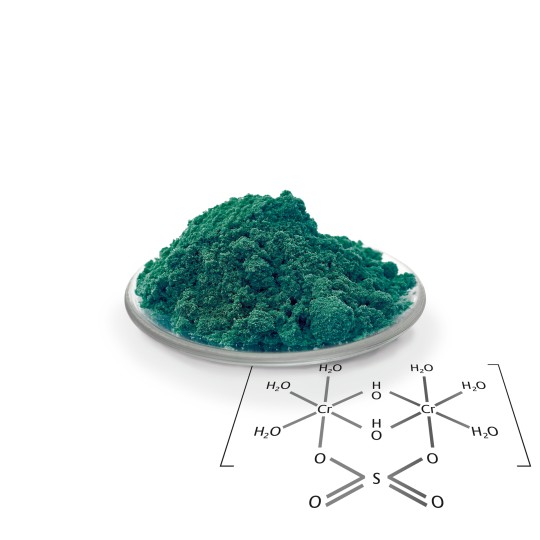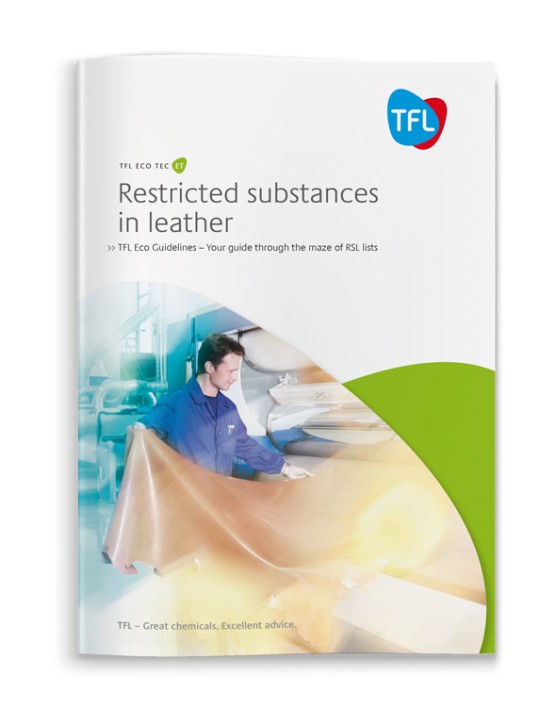Here is listed some basic information about each of the restricted substances that could be relevant for leather. These substances or group of substances are the ones typically encountered and are not an exhaustive list of all restricted substances. The information below is only an overview and the individual regulations need to be consulted for full details. To help find the restricted substances quickly they are listed in alphabetical order.
Listed at the end of this section are several substances and substance groups that are not relevant for leather, but are still very often requested.
Acetaldehyde
Acetaldehyde recently attracted a lot of attention by car makers particularly in the Asian automotive market. In GB/T 27630-2011 (the Chinese Regulation) limits for acetaldehyde emissions from car leather are set to be 0.2 mg/m3 which is extremely low and far beyond any health risks. Acetaldehyde is not being used in the manufacture of any leather chemical product and even if present in trace amouts in chemical products those do not contribute to the acetaldehyde readings. It has to be assumed that acetaldehyde is continuously formed by oxidation or fermatation of certain substances (fats, sugars, etc.) but also during the testing.
Specific TFL comment
The only way to achieve above low levels is the use of a scavenger product. TFL has developed the product A 3210 which can be used in Wet-end and finishing applications to suppress acetaldehyde formation.
Allergenic and sensitising dyes
- These dyes are typically disperse dyes, which are used for colouring textiles. The problem occurs with skin contact to the coloured material.
- Disperse dyes are not water-soluble so are normally not used for dyeing leather.
Specific TFL comment
TFL does not use any of the above types of allergic or sensitizing dyes in their leather dye range of: SELLA® Cool, SELLA® Derm, SELLA® Fast, SELLA® Star, SELLAFLOR®, SELLASET®.
Aromatic amines from azo dyes
Azo dyes are some 90% of all leather and textile dyes. Azo dyes break down under reductive conditions to form aromatic amines.
- 22 aromatic amines are forbidden in the EU Regulation 1907/2006 Annex XVII and listed in Appendix 8. These 22 amines are known to be carcinogens or potential carcinogens.
The EU Regulation specifies in Appendix 10 the test method for each type of substrate and in Annex XVII defines the detection limit of 30 mg/kg for each amine in leather. The official test method for leather is CEN ISO/TS 17234; this method is now updated and replaced by EN ISO 17234-1. Until now Ecolabels and brands have used the EU limit of 30 mg/kg, however;
- In 2009 China introduced a 20 mg/l limit and some global brands have started to also specify this limit which is lower than the EU Regulation.
- The leather extraction and chemical reaction step gives a complex matrix and analysing at less than 30 mg/kg can result in considerable variations and possible wrong assignments of amines. This was the reason for setting the limit value at 30 mg/kg in the EU Regulation.
Careful: A small number of Ecolabels restrict 2 additional aromatic amines that are not forbidden. Some test houses measure the presence of the forbidden amine, 4-aminoazobenzene, by analysing for the 2 amines, 4-aminoaniline (p-phenylene diamine) and aniline, both which are not forbidden.
Depending on the reduction conditions it is possible that for the widely used black dye, C.I. Acid Black 210, some 4-nitroaniline is reduced to 4-aminoaniline, which can lead to test houses giving a false positive result for 4-aminoazobenzene. The new method, EN ISO 17234-2 should be used for testing leather for 4-aminoazobenzene.
Specific TFL comment
All TFL dyes (SELLA® Cool, SELLA® Derm, SELLA® Fast, SELLA® Star, SELLAFLOR®, SELLASET® ) do not contain azo dyes made with the forbidden amines. Most commercially available azo dyes do not break down to give these forbidden amines.
Biocides
The EU Directive 98/8/EC, Biocidal Products Directive (BPD), controls and regulates the use of biocides, they are not part of REACH. Registration of a biocide is very expensive and only a few active biocide substances are expected to be available for the leather industry in the near future.
Biocides are applied to raw hides & skins (bactericides) and in pickling/tanning (fungicides) to stop the leather being damaged during transport and storage. Some of the chlorinated phenol type of biocides are now restricted. Only a few fungicides dominate the leather industry usage. The big 4 fungicides are commonly known by their abbreviations, for example, PCMC (para-chlor-meta-cresol), OIT (2-n-octylisothiazolin-3-one), OPP (ortho-phenylphenol), TCMTB(2-(thiocyanomethylthio) benzothiazole).
The Ecolabel, “Der blaue Engel” (the blue angel), gives recommendations for allowable limits in leather of the active fungicide components: PCMC < 300 mg/kg, OIT < 100 mg/kg, OPP < 500 mg/kg and TCMTB < 500 mg/kg.
Biocides are also used to stabilise chemical products that contain natural or biodegradable substances. These can be susceptible to bacteria or fungi attack. However, the quantity of biocide that would then be applied to the leather with the chemical is some 100 to 1000 times less than is applied to protect leather in the Beamhouse process.
Biocides found often in waste water emissions from tanneries are not only from products used during leather manufacture but can also derive form the animal raw hides where pesticides etc. are being used for protecting animals from diseases.
Specific TFL comment
TFL uses biocides which comply with the EU Biocidal Product Directive and the ‘Blue Angel‘ (Blauer Engel) issued by German Enviornmental Ministry.
Boron containing substances
Boric acid and disodium tetraborate, commonly called borax, have recently been notified as candidates in the SVHC decision making process. They are classified as toxic for reproduction. These boron compounds are widely used in many industries and if they do become SVHC substances, then their limited use in some leather industry processes will need to be replaced.
Boric acid is used in some deliming formulations and borax has been used in small amounts in leather chemical formulations to adjust the pH and penetration.
Specific TFL comment:
Leather made with the international range of TFL leather chemicals would comply with the SVHC requirements.
Brominated flame retardants
A group of polybrominated flame retardants are restricted. They are used in plastics. (They are not water soluble so not suitable for wet-end leather applications).
Specific TFL comment:
SELLA® Tec products from TFL used for fire protection do not contain polybrominated organic flame retardants.
Chlorinated paraffins (SCCP, short chain)
Short chained chlorinated paraffins (SCCP) are those with a chain length of C10–C13. EU Regulation 1907/2006 (formerly as EU Directive 2002/45/EC) restricts the marketing and sale of SCCP in preparations to a maximum of 1% (= 10 000 mg/kg). Analytical methods to determine SCCP in leather are still being developed. Currently there is no validated test method available.
Note: The medium chain MCCP (C14–C17) and long chain LCCP (C18–C30) chlorinated paraffins are not restricted by EU Regulation nor by the ZDHC Leather MRSL list. The presence of MCCP must be listed in the EU-Safety Data Sheet.
Specific TFL comment:
The international range of CORIPOL® fatliquors from TFL comply with the EU Regulation restricting SCCP.
Chlorinated phenols (PCP, TeCP and TriCP)
Chlorinated phenols were previously used extensively to inhibit mould growth. The 3 chlorophenols listed are now forbidden in consumer products:
- PCP (pentachlorophenol)
- TeCP (tetrachlorophenol)
- TriCP (trichlorophenol)
The detection level of 5 mg/kg has become the accepted limit using the EN ISO 17070 test method for leather.
Specific TFL comment:
TFL does not use PCP, TeCP and TriCP in the TFL range of leather chemicals.
Chromium (VI)
The hexavalent chromium oxidation state (Cr(VI)) is allergenic and carcinogenic if inhaled and thus restricted by the EU. The detection limit is 3 mg/kg in the leather test method, EN ISO 17075. This is the level generally accepted for Cr(VI) in leather. Some Ecolabels and brands try to be one step better and specify 1 or 2 mg/kg, but they list the same test method. This is not correct as the ISO Standard method includes information clearly pointing out how the 3 mg/kg detection limit was established. Lower detection limits cannot be justified with this technique.
The Cr-containing chemicals used in the manufacture of leather are all based on Cr(III). However, during manufacture it is possible that traces of Cr(VI) can be formed if certain measures in the the application process are not properly followed. Most important are good removal of natural grease, avoidance of fatliquors with high content of unsaturated fats and any oxidising agents. Use of vegetable tannins and anti-oxidants help to suppress the formation of Cr(VI) whereas low humidity and high temperature can trigger their formation particularly in the presence of unsatured fats. Cr(VI) is one restricted substance where, through the choice of the application process, the tanner is responsible for avoiding its presence.
The Cr(VI) oxidation state does not form organic complexes, so dyes based on stable organic Cr(III)-complexes do not form Cr(VI) in the leather. Careful: Analyses for total Cr measure all the oxidation states of chromium. This technique cannot be used to determine the Cr(VI) content.
Specific TFL comment:
The Cr-containing TANNESCO® syntans from TFL contain only Cr(III) salts, no Cr(VI) is present.
The use of the product SELLASOL® C6 in the last step of wet-end operations helps to eliminate the presence of any Cr(VI) in the leather. SELLASOL® C6 can also retard or prevent the formation of Cr(VI) during transport or storage. Post formation of Cr(VI) however can not be ruled out especially if an excess amount of unsaturated fats are present.
Dimethyl fumarate
Dimethyl fumararte is a solid, which sublimes to a gas. It has good anti-fungal properties, so it has been used in sachets inside the packaging for sofas, shoes and boots, especially those items being exported from Asia to Europe. Dimethyl fumarate is an allergic sensitizer at low concentrations and can cause severe skin rashes and irritations. Since 2009 the EU has forbidden the marketing of any products containing dimethyl fumarate. It is not used as a biocide for leather, the problem was caused by the inclusion of dimethyl fumarate inside the packaging and it depositing on the surface of the consumer goods.
Careful: Dimethyl fumarate is commonly referred to as DMF in publications and the media. It should not be mixed up with the solvent dimethyl formamide that chemists have traditionally called DMF.
Specific TFL comment:
TFL does not use dimethyl fumarate in any of the TFL leather chemical products.
Formaldehyde
Formaldehyde is used extensively for making industrial chemicals. For example, in the leather industry many syntans are formaldehyde polymers. Once the formaldehyde has reacted it is no longer present as formaldehyde. Some small residues of unreacted formaldehyde can occur in a few products, typically melamine resins and some cationic dye fixing agents. Different analytical procedures are used to measure the free unbound formaldehyde and the hydrolysable formaldehyde (only released by interaction with water). For leather used in automotive seats the free formaldehyde test (emission into air) is important. For leather in shoes with skin contact the water extraction method determines the free and hydrolysable formaldehyde.
There is currently no EU regulation restricting the use of formaldehyde in leather.
- Japan and China have restrictions for articles, especially those in skin contact
- Ecolabels and brands set formaldehyde limits, e.g. as 20mg/kg (20 ppm) for children and 75mg/kg (75 ppm) for adult shoes
- The automotive industry has limits for formaldehyde in the leather (often 10 ppm) and for emissions into the cabin air
Careful: Select the correct analytical methods for leather:
- Water extraction (EN ISO 17226-1) – measures free and hydrolysable formaldehyde
- Emission into air (EN ISO 17226-3) – measures free formaldehyde
Specific TFL comment:
The SELLATAN® and SELLASOL® syntan products are either low formaldehyde or formaldehyde-free (for both the free and hydrolysable formaldehyde). Trace levels are listed in separate TFL Statement of restricted substances. With suitable application processes, leather can be prepared to comply with the very low residual formaldehyde requirements given above. For example, by using a syntan like SELLATAN® WL-W and the auxiliary syntans SELLASOL® HFN, SELLASOL® FTF or SELLASOL® MI, it is possible to make leathers that are free of residual formaldehyde. The MAGNOPAL® polymer retanning agents are free of formaldehyde.
Heavy metals
EU limits for heavy metals in consumer items have been introduced via the EN Standard for extractable heavy metals in toys. In the USA the CPSC sets levels for heavy metals in consumer items. The EN 71-3 method has defined the following maximum limits for extractable heavy metals:
- As: 25 ppm, Cd: 75 ppm, Total Cr: 60 ppm
- Hg: 60 ppm, Pb: 90 ppm, Sb: 60 ppm
- Ba: 1000 ppm, Se: 500 ppm
The low pH extraction process could make it difficult for chrome-tanned leather to comply. Ecolabel limits for heavy metals are often much lower and normally they also specify total metal. For example, some textile Ecolabels set very low limits for total Cr. Obviously achieving these lower levels is not possible with Cr-tanned leather. Other Ecolabels, such as the SG Label, accept chrome-tanned leather and restrict only the extractable Cr and Cr(VI).
Careful: Check if the specification is for extractable or total metal content and check which extracting agent is specified!
- The extraction is at pH 1–1.5 for the EN 71-3 method for toys
- Ecolabels often specify extraction with a pH 5.5 synthetic perspiration solution (prepared according to ISO 105-E04)
Often there are requests from certain brands for metal-free leather. Such request should be specified for ‘free of toxic heavy metals’ since presence of non-toxic metals can be critical to achieve certain performances (e.g. high light fastness of metal dyes. Metal-free leather according to EU guidline is specified as as containing less than 0.1 % of Cr(III), Al, Ti, Zr, Fe.
Specific TFL comments:
Other than Cr(III), TFL is not adding the above heavy metals (As, Cd, Cr, Hg, Pb, Sb, Ba, Se) to any TFL product. Metal content of TFL dyes and pigments are listed in separate TFL Statement of Restricted Substances.
Some dyes are organic metal complexes of either Cr(III), Co, Cu or Fe. This information is listed in section 12 of the TFL Safety Data Sheet.
N-methyl pyrrolidone
N-methyl pyrrolidone (NMP) has been extensively used as a high boiling point solvent and flow-improver in finishing formulations. In the Californian Proposition 65 legislation, NMP was classified as toxic for reproduction. In the EU, the classification has now been changed to toxic for reproduction and from the end of 2010 any product formulation containing quantities of NMP above 0.1% must list this in the Safety Data Sheet. Most brands and automotive manufacturers now do not allow the use of NMP in finishing products.
Specific TFL comment:
No product in TFL range uses NMP and NEP (N-ethylpyrrolidone).
Nonylphenol ethoxylate and nonylphenol
The EU Regulation requires that nonylphenol (NP) and nonylphenol ethoxylate (NPE or NPEO) are not to be used in preparations at levels greater than 0.1% during leather (or textile) processing if the waste water is discharged. The generalised form of these type of substances is written as APEO (alkylphenol ethoxylate). Until recently the nonylphenol ethoxylates were used extensively as non-ionic surfactants and emulsifiers in the textile and leather industry. In Europe they have now been replaced by alternative surfactants. In order to show NPEO containing preparations have not been used, Ecolabels can require less than 100 mg/kg in leather.
Specific TFL comment:
The TFL international range of BORRON® surfactants are not based on nonylphenol ethoxylate.
Organotin compounds
TBT (tributyl tin), DBT (dibutyl tin) and MBT (mono-butyl tin) are restricted chemicals. These are used as antimicrobals, e.g. in paints for boats. Tin compounds can be used as catalysts in the production of PU polymers. Trace levels of organotin compounds may be present in PU finishes but after application they will be fixed.
Specific TFL comment:
TFL does not add restricted organotin compounds to any leather chemical product.
Perfluorochemicals (PFC)
The fluorochemicals based on C8 chemistry, eg. PFOS (perfluorooctane sulfonate) has been found to be persistent in nature so it has been forbidden. The EU Regulation limits PFOS to 0.005 % by mass in consumer goods. Analytical methods are complicated and an ISO method still in development. The corresponding acid form, PFOA, is usually also restricted by brands and Ecolabels. The same applies for chemicals based on C6 Fluor Chemistry. Fluorochemical products based on C4 chemistry have by far the lowest degree of bioaccumulation and toxicity among all fluorochemical products. Nevertheless some of the brands have decided to completely restrict the use of PFC.
Specific TFL comment:
TFL does not have PFOS or PFOA in the fluorochemicalproducts it supplies. TFL fluorochemicalproducts are all based on C4 chemistry.
Phenol
Some RSL lists regulate the content of free phenol.Phenol is used in the manufacture of polymers(synthetic tanning agents) and as in the caseof formaldehyde trace amounts can be found insome of these products.
Specific TFL comment:
Some TFL products from SELLATAN®, SELLASOL®range contain traces of free phenol resulting fromthe polymerisation process. Trace level amountsare listed in the separate TFL Statement of RestrictedSubstances.
Phthalates6 phthalates (DINP, DEHP, DNOP, DIDP, BBP andDBP) are restricted in the EU. These are used assoftening agents in plastics to give it the requiredflexibility. The EU Regulation limits individualphthalates to 0,1% (= 1000 mg/kg) in chemicalpreparations.
Ecolabels and leather shoe manufacturers typicallyset limits of < 500 mg/kg total phthalates inleather.
Specific TFL comment:
TFL does not use the restricted phthalates in theleather chemical products.
Polycyclic aromatic hydrocarbons (PAH)
Polycyclic aromatic hydrocarbons (PAH) arepresent in tar oils. These typically dark colouredextracts are used as cheap softening agentsin rubber and some plastics. It is most unlikelythat they would be used by the leather industry.Naphtalene, the most simple PAH substance, isnot intentionally used in leather manufacture butpresent in trace level in some dispersing products.
Specific TFL comment:
TFL does not use PAH substances intentionally inleather chemical products. Naphtalene can, however,be found in trace levels in some dispersingagents. Levels are listed in separate TFL statementfor Restricted Substances and do not exceed anyallowable limits of major RSL and MRSL.
Substances of Very High Concern (SVHC)
Substances of Very High Concern (SVHC) are animportant new part of the REACH Regulation(EU 1907/2006) in the EU. After a consultancyprocess and risk evaluation, those substances thatare considered to be SVHC will be listed in AnnexXIV of the EU Regulation. Currently there are168 chemical substances in the SVHC candidatelist, but at present none have yet been assignedSVHC status in Annex XIV which would then meanthat substances could not be generally used andneed authorisation for a particular use. Each EUmember country can introduce substances (withsupporting documentation) for the candidatelist. After this, the candidate substances undergoa risk assessment process before the decisionis made about becoming a SVHC substance inAnnex XIV. The risk assessment evaluation is animportant step in judging the potential harm ofchemical substances.
The EU Regulation requires that special effortsshould be made to replace the use of any AnnexXIV listed SVHC substances.
Consumer articles, e.g. leather, containing morethan 0.1 % of a SVHC substance will not be allowedto be imported into the EU region. Presence of a SVCH substance in chemcials products at levelshigher than 0.1 % needs to be declared and user needs to be informed by the chemicals supplier on its safe use. The current 168 candidate SVHC substances, except for the recently announced boric acid and disodium tetraborate, are not likely to be used by today’s leather industry.
Specific TFL comment:
As soon as a chemical substance is put on the candidate list many brands and Ecolabels react immediately restricting the use of the candidate substance. From a legal point of view, candidate chemicals can still be used and in many cases the residual amount in leather may not exceed 0.1 %. In the manufacture of active TFL sales products no SVHC substance is being used.
Volatile Organic Compounds (VOC)
Volatile Organic Compounds (VOC) refer to organic solvents, especially those with a boiling point between 50°C – 260°C. If present, these organic substances can be emitted into the air during leather production, especially in the finishing process. The EU regulates the amount of VOC output that can be emitted into the air with respect to leather manufacture. The automotive and upholstery industries place restrictions on the VOC emission from leather. Both industries have different test methods and requirements. The VOC is measured by heating the leather in a closed chamber and the individual emitted VOC substances are determined by a mass spectrometer (i.e VDA 278 test method ) The results can be influenced by the time since the leather was made and the storage method. The Very Volatile Organic Compounds (VVOC) are those with a boiling point below 50°C. The semi-volatile organic compounds (SVOC) have boiling points between 260°C – 400°C. VOC emissions of special interest coming from leather are formaldehyde, acetaldehyde, benzene, toluene, xylene, ethylbenzene, styrene, acrolein, NMP and NEP and these are all including various RSL and regulations.
Specific TFL comment:
By using TFL products it is possible to comply with the total VOC emission requirements for above mentioned substances set by brands, Ecolabels and OEM’s.
Restricted substances not relevant to the leather industry
Some tanneries give to their chemical suppliers long lists of restricted substances that they have received from their customers. Many of the listed substances have effectively no relevance for the leather industry of today. For many of them the only reason for listing seems to be for completeness and perhaps to make additional tests. Typical non-relevant substances for leather are asbestos and blue colorant. The EU Regulation 1907/2006 (formerly in EU Directive 2003/03/EC) bans the use of a “blue colorant”, Index No. 611-070-00-2. According to current knowledge this forbidden blue colorant has never been sold to the worldwide leather industry. No samples of the dye have been able to be located so it is not possible to analyse for this colorant.
- Chlorofluorocarbons (CFC) and hydrochlorofluoro-carbons (HCFC)
- Heavy metals: arsenic (As), beryllium (Be), bismuth (Bi), cadmium (Cd), mercury (Hg), selenium (Se)
- Nickel metal
- Pesticides
- Polychlorinated biphenyls (PCB) and terphenyls (PCT)
- Polyvinyl chloride (PVC)



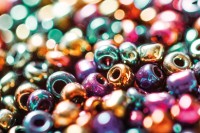

 Main Reaction - The TFL Blog Stories, incidents, tips and facts around the topics leather, chemistry, fashion, sustainability and ecology. Our editorial staff consisting of experienced tanners, scientists, market experts, fashion and communication specialists has sharped their pencils and will supply you with fresh and inspiring content on a regular basis.
Main Reaction - The TFL Blog Stories, incidents, tips and facts around the topics leather, chemistry, fashion, sustainability and ecology. Our editorial staff consisting of experienced tanners, scientists, market experts, fashion and communication specialists has sharped their pencils and will supply you with fresh and inspiring content on a regular basis.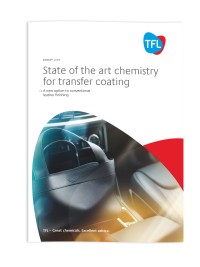
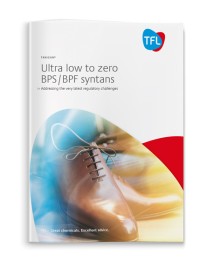
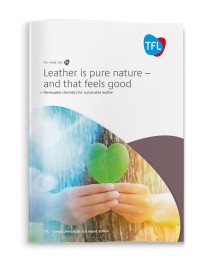
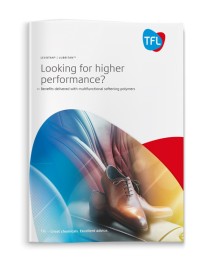 LEVOTAN® / LUBRITAN™ - Looking for higher performance? Tanners around the world are facing increasing challenges from their customers, for example, demands for higher performance such as fastness to light and heat resistance, but also lighter weight leather and more recently odour / emissions avoidance.
LEVOTAN® / LUBRITAN™ - Looking for higher performance? Tanners around the world are facing increasing challenges from their customers, for example, demands for higher performance such as fastness to light and heat resistance, but also lighter weight leather and more recently odour / emissions avoidance.






